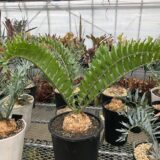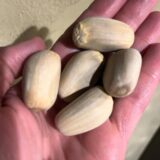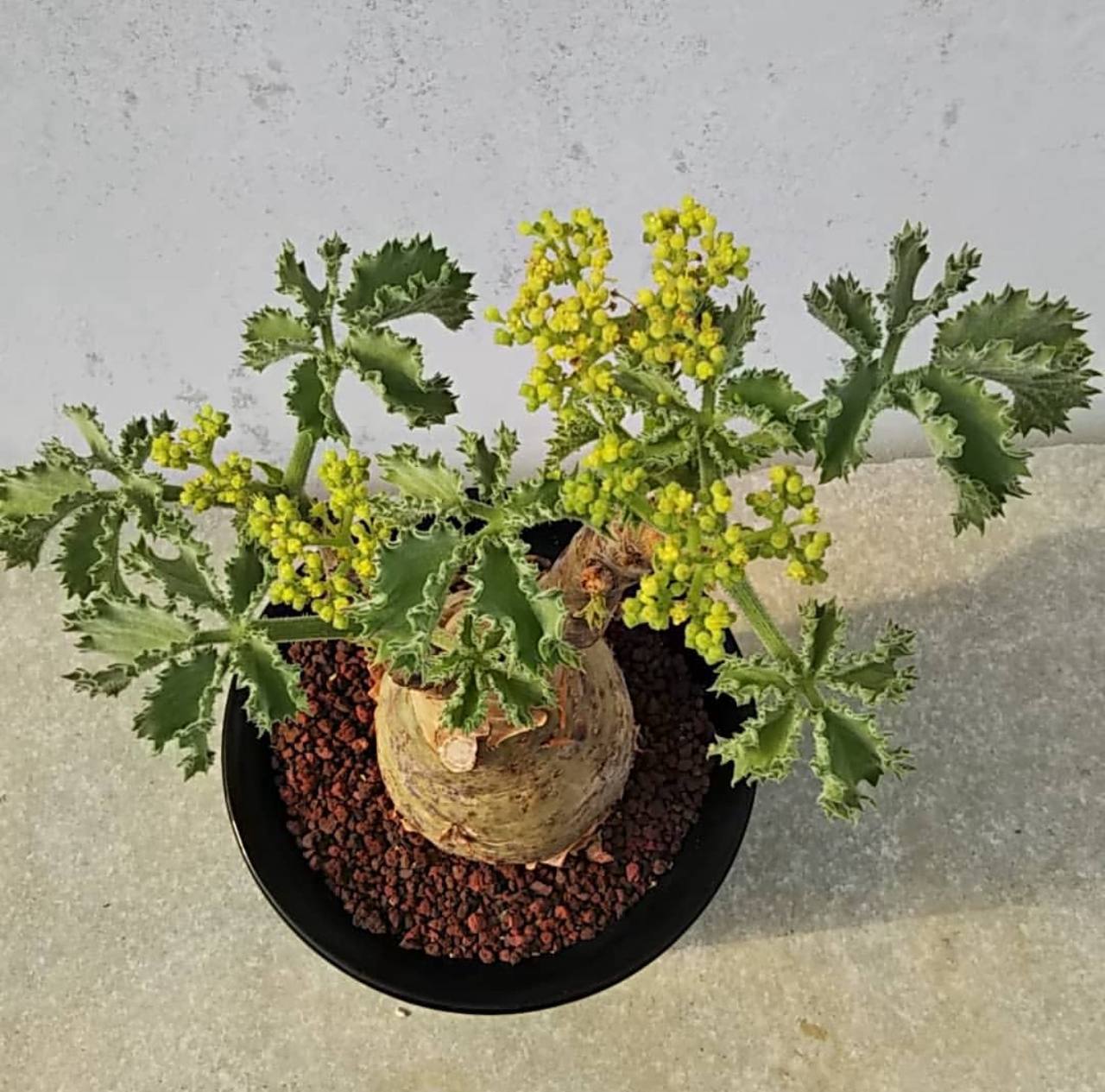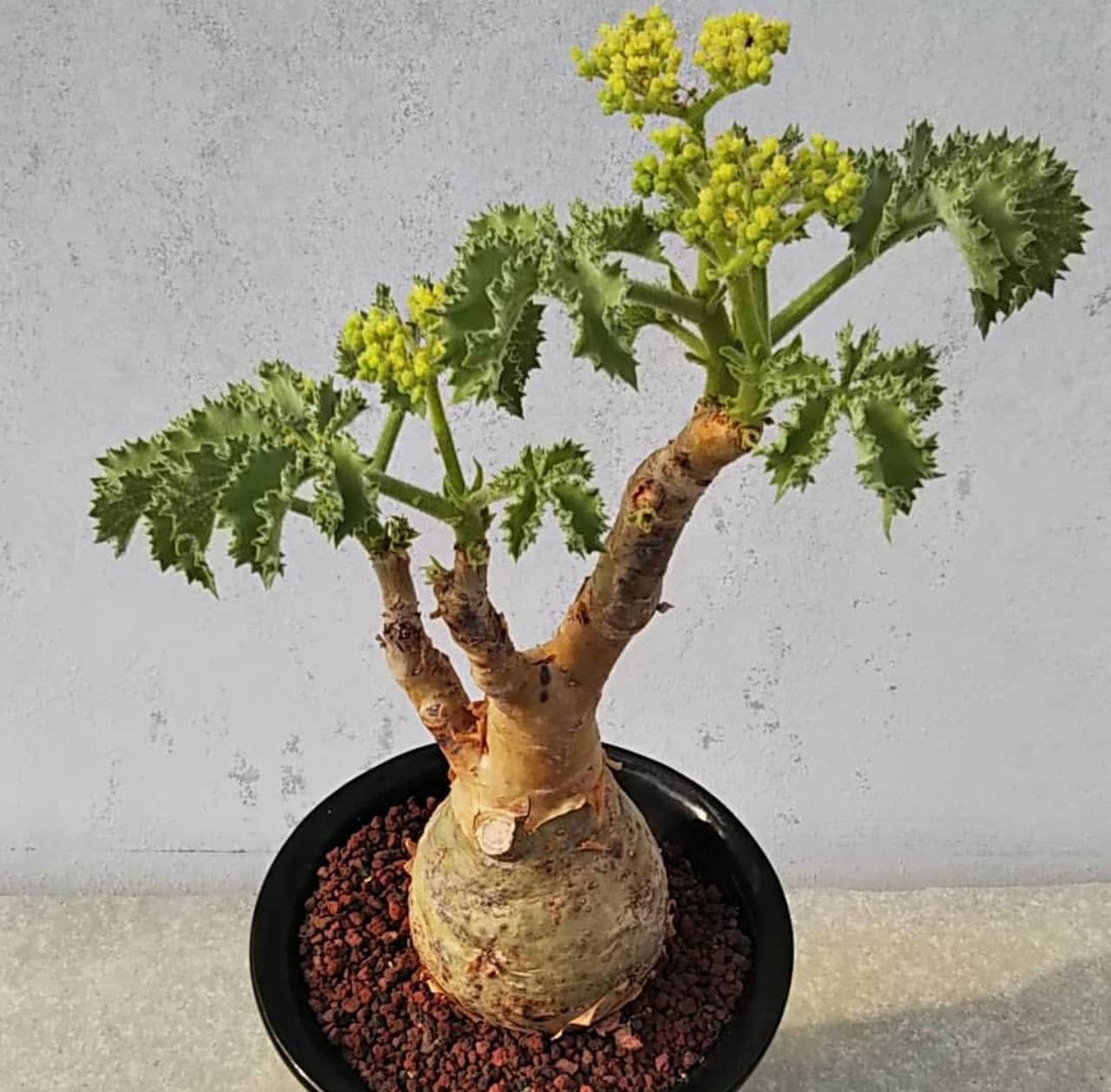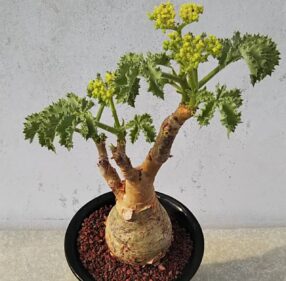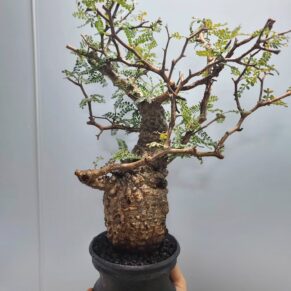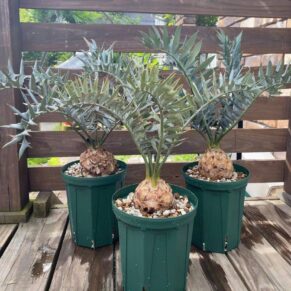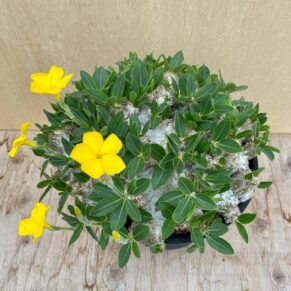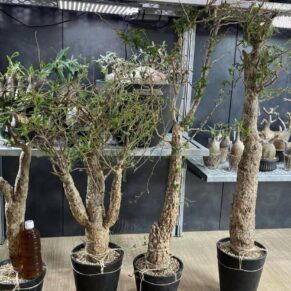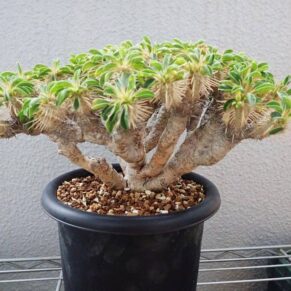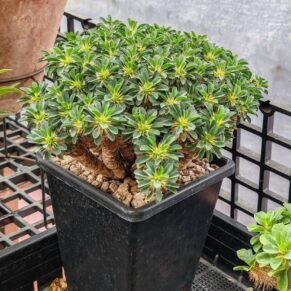Total $100.00
Cyphostemma uter var. macropus: A Comprehensive Guide
Taxonomy and Nomenclature
Scientific Name: Cyphostemma uter var. macropus
Family: Vitaceae
Synonyms:
-
Cissus macropus Welw. (1865)
-
Cyphostemma macropus (Welw.) Desc. (1960)
-
Vitis macropus (Welw.) Desc. (1960)
-
Cyphostemma uter var. macropus hort. (Horticultural variety)
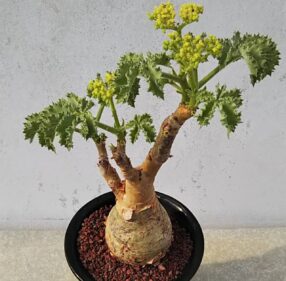
Cyphostemma uter Var macropus
🌍 Origin and Habitat of Cyphostemma uter Var macropus
Cyphostemma uter var. macropus is native to the arid regions of southwestern Africa, specifically the Serra dos Montres Negros near Mossamedes in Angola. This variety thrives in hot, dry, and stony environments, predominantly on east-facing slopes at altitudes ranging from 100 to 450 meters. The plant’s natural habitat is characterized by minimal rainfall and intense sunlight, conditions that have shaped its unique adaptations.Facebook group.
🌱 Morphology and Growth Characteristics
-
Caudex (Tuberous Rootstock): The plant features a swollen, spherical, or roundish caudex that is often broader than tall. This structure, measuring between 35 to 60 cm in diameter, serves as a water reservoir, enabling the plant to endure prolonged dry periods. The caudex’s bark is dull white to orange, peeling off in paper-like flakes, adding to its ornamental appeal.Shop cyphostemma here
-
Branches: Succulent and spreading or upright, the branches taper towards the apex and range from 10 to 30 cm in height and 4 to 8 cm in diameter. The bark of the branches also peels, contributing to the plant’s distinctive appearance.
-
Leaves: The leaves are crowded at the ends of the branches, appearing during the active growing season. They are simple, alternate, fleshy, and hairy when young, with undulate, serrated margins. The petioles are 3.5 to 5 cm long. These leaves are short-lived and shed as the plant enters dormancy.
-
Flowers: Cyphostemma uter var. macropus produces cup-shaped flowers that are pale yellow to greenish-yellow. These flowers are arranged in cymes and bloom during the summer months.Shop cyphostemma here
-
Fruit: The plant bears berries post-flowering, though they are not edible and should not be consumed.
🌞 Cultivation and Care
Cultivating Cyphostemma uter var. macropus requires attention to its specific environmental needs:
-
Light: The plant prefers bright light with moderate direct sunlight. A well-lit location promotes healthy growth and development of the caudex.
-
Watering: Moderate watering is essential. Allow the soil to dry completely between waterings to prevent rot. During the dormant period, significantly reduce watering.
-
Soil: Use a well-draining potting mix, such as a cactus-specific blend enriched with perlite to enhance drainage.
-
Temperature: This species is sensitive to cold and should be kept in temperatures above -3°C. In cultivation, ensure the plant is kept relatively dry and well-ventilated during colder months.
-
Toxicity: Cyphostemma uter var. macropus is potentially toxic if ingested. Handle with care and keep out of reach of children and pets.
🌱 Propagation of Cyphostemma uter Var macropus
Propagation can be achieved through seeds or cuttings:
-
Seeds: Sow seeds in autumn or early winter. Germination can be variable, and seedlings are prone to rot. It’s crucial not to disturb them until they are well-rooted.
-
Cuttings: Take cuttings during the active growing season. Allow the cut ends to callous before planting in a well-draining medium.
🧪 Ecological Adaptations
In its native habitat, Cyphostemma uter var. macropus exhibits several adaptations to survive harsh conditions:
-
Water Storage: The caudex acts as a water reservoir, enabling the plant to withstand extended periods of drought.
-
Leaf Shedding: The plant sheds its leaves during dry periods to minimize water loss through transpiration.
-
Root System: It possesses an abundant fascicular root system, requiring large containers for cultivation. The soil should be well-drained with a good organic content to support its growth.Shop cyphostemma here
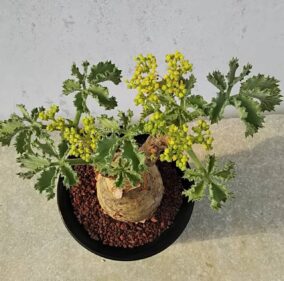
Cyphostemma uter Var macropus
🧹 Maintenance Tips
-
Container Size: Choose a pot that allows for the development of its root system. Terracotta containers are recommended for their breathability.
-
Mulching: Apply a mulch of large rock fragments to retain moisture and provide support for the root hairs.
-
Dormancy Care: During the dormant period, reduce watering and ensure the plant is kept in a cool, dry location.
🌍 Conservation Status
While not currently listed as endangered, habitat destruction and climate change pose potential threats to the natural populations of Cyphostemma uter var. macropus. Conservation efforts are essential to preserve its native habitats and ensure the survival of this unique species.
🛒 Availability
Cyphostemma uter var. macropus is available for purchase through various online nurseries and specialty succulent retailers. When acquiring this plant, ensure that the seller provides information on its cultivation requirements and any specific care instructions.
This detailed guide aims to provide enthusiasts with the knowledge needed to successfully cultivate and appreciate Cyphostemma uter var. macropus. By understanding its unique characteristics and care requirements, you can enjoy the beauty and resilience of this remarkable plant in your collection.

